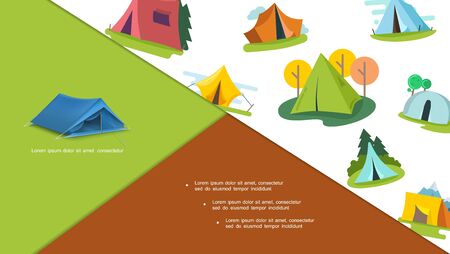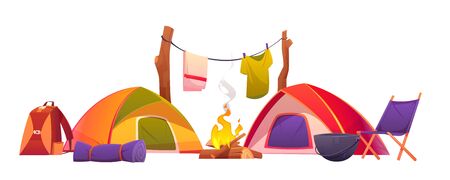Introduction: The Allure of Backpacking Across America
There’s something truly magical about hitting the trails with your family, carrying everything you need on your back, and exploring the breathtaking natural beauty America has to offer. For many families, backpacking isn’t just a hobby—it’s a cherished adventure that brings everyone closer together, away from the bustle of daily life and into the heart of nature. Whether you’re waking up to birdsong under towering redwoods or listening to the gentle rush of a mountain stream at sunrise, backpacking creates unforgettable memories for parents and kids alike.
When it comes to backpacking in the United States, both the East Coast and West Coast offer their own unique charms and challenges. The East Coast draws families with its lush forests, historic trails, and accessible paths winding through rolling hills and ancient woodlands. On the other hand, the West Coast is famous for its dramatic landscapes—think rugged mountains, pristine alpine lakes, and vast wilderness areas that promise adventure at every turn. In this article, we’ll dive into what makes each coast special for family backpackers and compare the experiences so you can plan your next big adventure with confidence.
2. Scenery and Terrain Differences
One of the most exciting parts of backpacking with your family is discovering the unique scenery each region offers. The East and West Coasts of the United States serve up two totally different backdrops for adventure, making every hike memorable in its own way. Let’s take a closer look at what sets these regions apart and how their landscapes can shape your family’s hiking experience.
Lush Appalachian Forests vs. Dramatic Pacific Coastline
On the East Coast, especially in areas like the Appalachian Trail, you’ll find dense, green forests filled with hardwood trees, winding rivers, gentle hills, and lots of shady paths—perfect for families looking for cooler, more sheltered hikes. The forested trails are home to colorful wildflowers in spring and a vibrant display of leaves in fall, making them both beautiful and educational for kids interested in nature.
In contrast, the West Coast dazzles with its jaw-dropping scenery along places like the Pacific Crest Trail. Here you’ll encounter rugged mountain ranges, open meadows, towering redwoods, rocky cliffs, and sweeping ocean views that feel straight out of a movie. Trails often have steeper climbs and more dramatic elevation changes, offering an exciting challenge for adventurous families who love wide-open vistas.
Side-by-Side Comparison: East vs. West Coast Landscapes
| Feature | East Coast (Appalachian) | West Coast (Pacific) |
|---|---|---|
| Main Scenery | Lush forests, rolling hills | Dramatic coastlines, high mountains |
| Trail Shade | Mostly shaded under tree canopy | More exposed to sun; some dense forests |
| Wildlife | Deer, birds, black bears | Elk, mountain lions, whales (coastal) |
| Seasonal Highlights | Fall foliage, spring blooms | Wildflower super blooms, snow-capped peaks |
| Family-Friendliness | Softer terrain; gradual elevation changes | Steeper trails; big scenic payoffs |
What These Differences Mean for Family Hikers
If your family enjoys leisurely strolls under a leafy canopy where kids can spot wildlife or collect leaves, the East Coast might be your perfect match. For those seeking breathtaking views and don’t mind a little extra climbing or exposure to the elements, the West Coast offers unforgettable moments—think whale watching or standing among ancient redwoods together. No matter which side you choose, each region promises plenty of bonding time and new discoveries on every mile of trail.

3. Weather and Seasonal Considerations
One of the biggest differences families will notice when planning a backpacking trip on the East Coast versus the West Coast is the climate. The weather plays a huge role in shaping your outdoor adventure, especially when little ones are along for the journey! On the East Coast, you’ll find a humid climate with four distinct seasons. Summers can be hot and muggy, while winters bring chilly temperatures and even snow in many regions. Spring and fall offer milder conditions, making them ideal times for family backpacking—think colorful foliage in New England during autumn or blooming wildflowers in spring.
In contrast, the West Coast—especially areas like California, Oregon, and Washington—features more moderate, Mediterranean-like weather along the coastlines. Summers tend to be dry and warm, while winters are rainy but rarely freezing near sea level. If you’re heading inland toward the Sierra Nevada or Cascade mountains, expect cooler temperatures and possible late-season snow well into early summer. For most families, late spring through early fall is the sweet spot for backpacking out West, with clear trails and pleasant weather.
No matter which coast you choose, always check local forecasts before heading out and pack layers so everyone stays comfortable. Each region has its own “best season,” so plan your trip around what works best for your family’s comfort and sense of adventure!
4. Wildlife Encounters and Safety Tips
Backpacking across the United States offers a wide variety of wildlife encounters, but the types of animals you might see—and how to stay safe around them—can vary significantly between the East and West Coasts. Understanding these differences will help ensure a safe and enjoyable trip for your whole family.
Common Wildlife on Each Coast
| Region | Typical Wildlife |
|---|---|
| East Coast | White-tailed deer, black bears, raccoons, foxes, snakes (like copperheads), ticks, songbirds |
| West Coast | Black bears, mountain lions, rattlesnakes, elk, coyotes, marmots, eagles |
Safety Tips for the East Coast
- Bears: While black bears are generally shy, always store food in bear-proof containers or hang it from a tree. Make noise while hiking to avoid surprising them.
- Ticks: Wear long sleeves and pants. Use insect repellent and check for ticks regularly, especially after hiking through grassy or wooded areas.
- Snakes: Watch where you step and avoid tall grass or piles of leaves. Most snakes are not aggressive if left alone.
Safety Tips for the West Coast
- Bears: In addition to food storage, keep campsites clean. In some areas, you may encounter both black and grizzly bears, so know which species are present and follow local guidelines.
- Mountain Lions: Stay in groups and keep children close. If you see a mountain lion, make yourself look larger and do not run away; instead, back away slowly.
- Rattlesnakes: Be cautious around rocks and logs. Listen for their warning rattle and give them plenty of space if encountered.
Regional Tip Table: Quick Comparison
| East Coast | West Coast | |
|---|---|---|
| Main Concern | Bears & Ticks | Bears & Mountain Lions & Rattlesnakes |
| Packing Must-Have | Insect repellent, bear bag/box | Bear canister, snake gaiters, whistle for group safety |
| What to Teach Kids | Avoid wildlife interaction; tick checks daily; bear safety basics | Stay close to adults; what to do if seeing a mountain lion or snake; leave no trace principles |
A Family-Friendly Reminder:
No matter where you hike, always supervise children closely and review safety guidelines before heading out on the trail. A little preparation goes a long way toward keeping everyone safe while creating lifelong memories together!
5. Trail Culture and Community
One of the most memorable aspects of backpacking is the unique trail culture that blossoms in different regions—and this can make a big difference, especially for families with kids. On the East Coast, you’ll often find a strong sense of tradition on trails like the Appalachian Trail. Hikers commonly greet each other with friendly “hellos” or share stories at rustic shelters, creating a cozy, almost small-town vibe. Trail magic—unexpected acts of kindness like snacks left by “trail angels”—is woven into the experience, making everyone feel welcome and supported.
In contrast, West Coast trails such as those along the Pacific Crest Trail foster a more laid-back but equally welcoming community. Here, hikers might be more independent, yet there’s a spirit of mutual respect and camaraderie, especially at popular campsites or trailheads. You’re likely to find organized support services like shuttle rides or gear swaps near larger towns, which can be a huge relief for parents navigating logistics with children in tow.
Etiquette can differ too: East Coast hikers tend to emphasize Leave No Trace principles and may be quick to remind others about trail stewardship, while West Coast trekkers often highlight inclusivity and personal expression—think colorful hiking outfits and creative trail names! Both cultures are incredibly supportive but bring their own flavor to the journey.
For families, these regional differences mean you can choose what feels right for your crew. Whether it’s bonding over campfire chats on the East Coast or exploring vibrant trail communities out west, both offer plenty of chances for connection and fun. Embracing these local customs not only helps everyone fit in but also makes every mile more meaningful—turning your backpacking trip into an unforgettable family adventure.
6. Choosing Your Coast: What’s Best for Your Family?
Deciding between the East and West Coast for your family’s backpacking adventure can feel overwhelming, but it’s really about finding the right fit for your unique crew. Here are some gentle pointers to help you make a choice that matches your family’s needs, interests, and the ages of your kids.
Consider Travel Time and Accessibility
If you have younger children or limited vacation days, think about which coast is closer to home or easier to reach. East Coast trails often offer shorter driving distances between cities and trailheads, making weekend getaways more manageable. On the West Coast, destinations may require longer drives or flights, but reward you with breathtaking wilderness experiences.
Match Activities to Your Kids’ Ages
Younger children often thrive on shorter hikes with lots of interesting stops—think nature centers, lakes, and interpretive trails, which are plentiful in many East Coast parks. If your kids are older and up for a challenge, West Coast routes like those in Yosemite or Olympic National Park promise rugged terrain and awe-inspiring scenery perfect for adventurous teens.
Think About Comfort and Convenience
The East Coast is known for its established campgrounds, nearby amenities, and access to small towns—great if you like a mix of outdoor fun and creature comforts. The West Coast tends toward wild spaces with fewer facilities, ideal if your family loves unplugging and embracing a true back-to-nature experience.
Factor in Interests and Scenery
If your family loves history or wants to combine hiking with cultural attractions, the East Coast’s rich heritage sites add extra layers to your trip. For those who dream of dramatic mountain views or exploring redwood forests, the West Coast will surely inspire.
Start Small—And Grow Together
No matter which coast you choose, start with manageable trips that let everyone build confidence. Invite input from your kids about what excites them most—a waterfall hike, beach campsite, or forest walk? Involving everyone makes the adventure even more meaningful—and memorable—for your whole family.
7. Conclusion: Embracing Adventure and Making Memories
After exploring the unique backpacking experiences offered by both the East and West Coasts, it’s clear that each region has something special to offer adventurous families. The lush forests, rolling mountains, and rich history of the East Coast provide a sense of tradition and close-knit exploration, while the dramatic vistas, expansive wilderness, and diverse ecosystems of the West Coast encourage bold journeys and awe-inspiring discoveries. What truly matters is not which coast you choose, but the memories you create together along the way. Whether you’re trekking through Appalachian trails or marveling at Pacific sunsets, every adventure brings opportunities for connection, growth, and laughter. So as you plan your next family backpacking trip, keep an open mind and consider both coasts—each journey will offer new lessons and unforgettable moments that your family will cherish for years to come.

